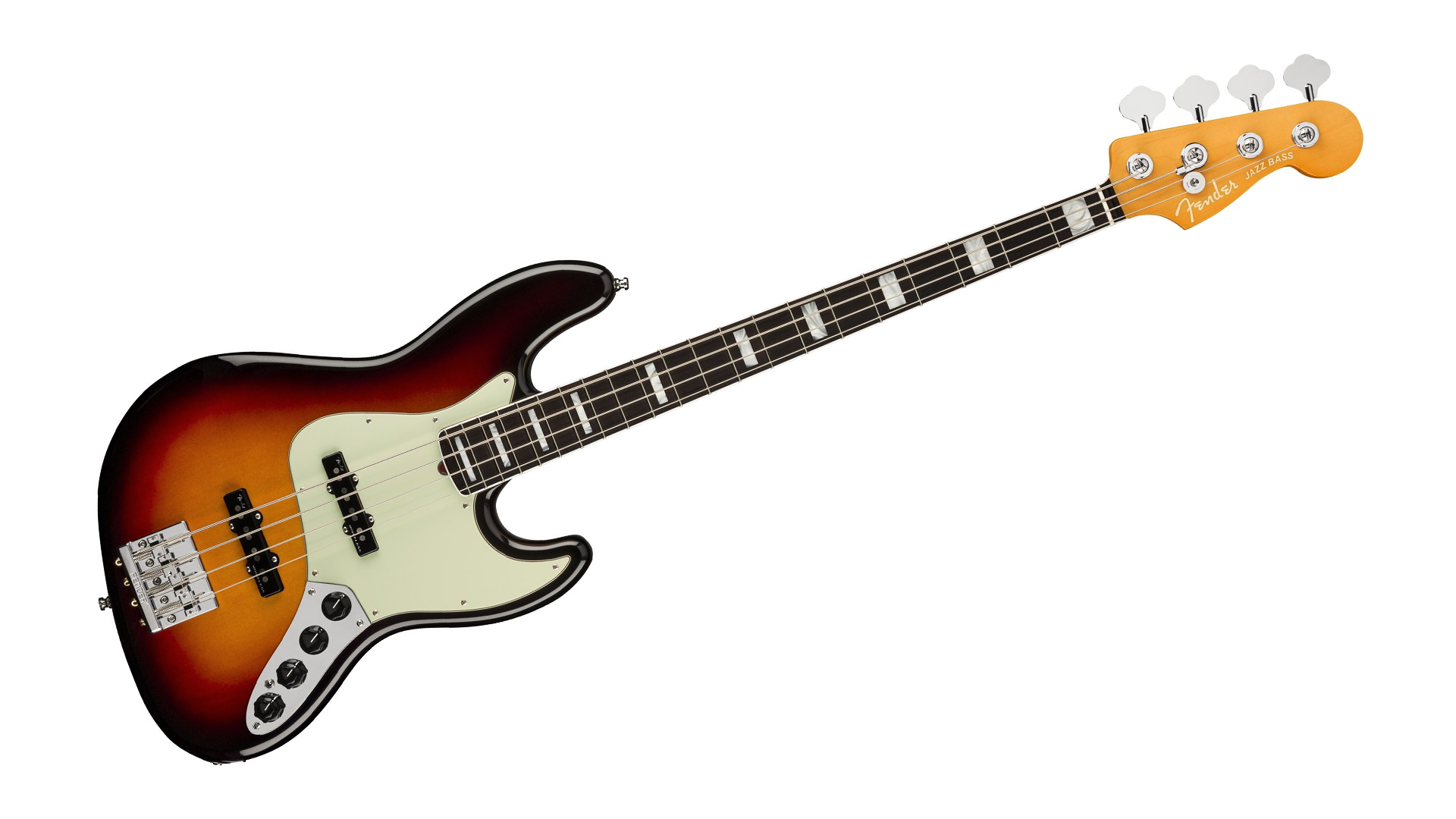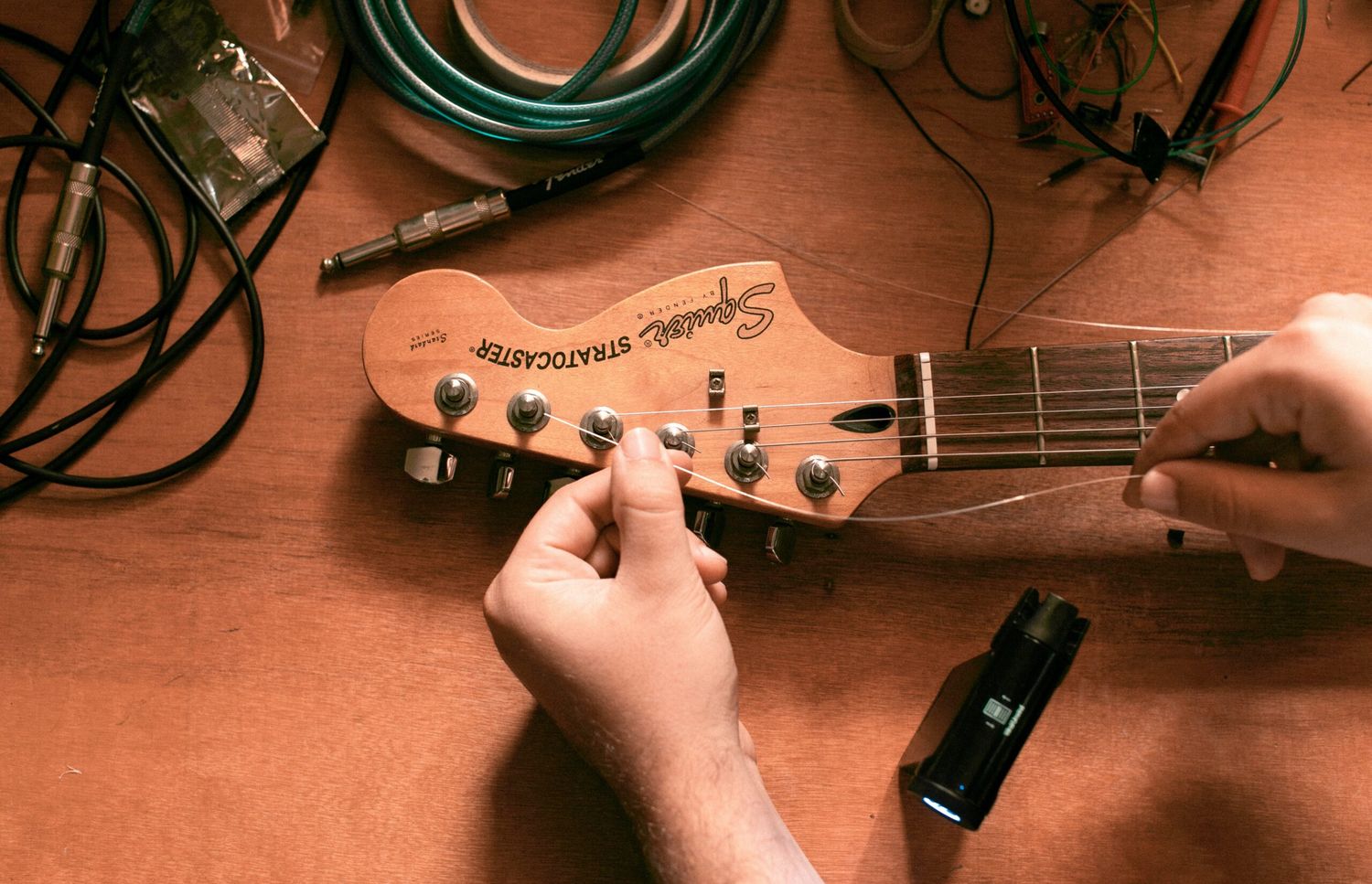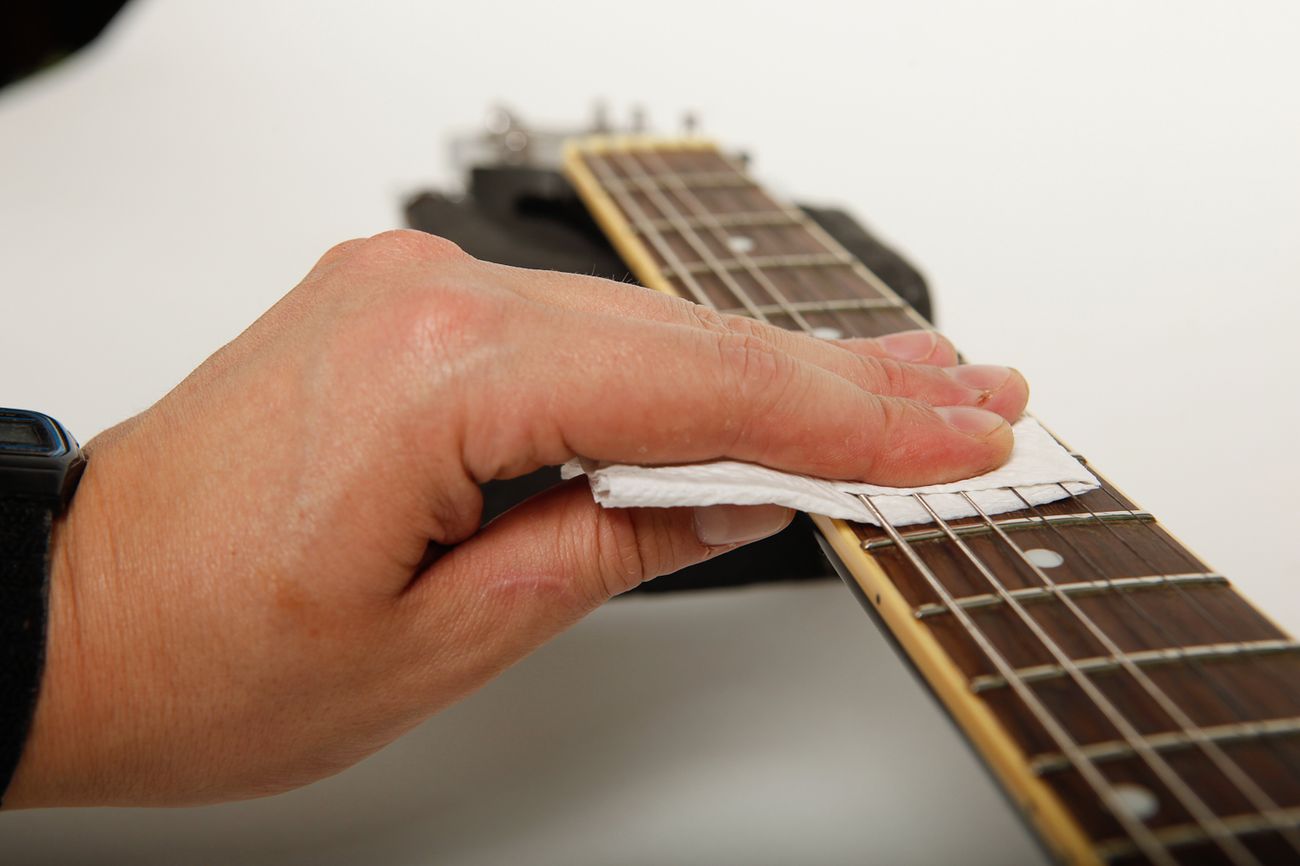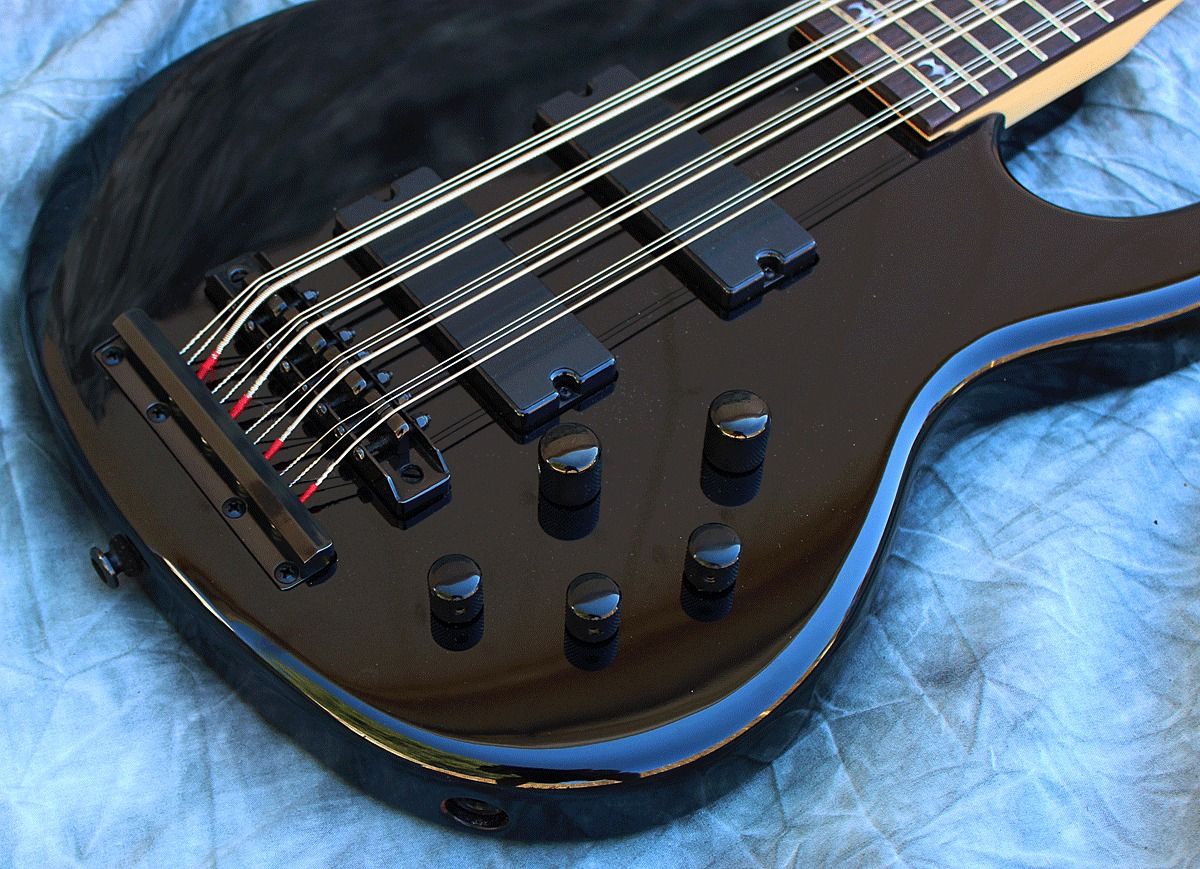Home>Instruments>Bass>How To Tune A 5 String Bass Guitar


Bass
How To Tune A 5 String Bass Guitar
Modified: February 15, 2024
Learn how to tune your 5 string bass guitar with our step-by-step guide. Improve your bass skills and achieve the perfect sound.
(Many of the links in this article redirect to a specific reviewed product. Your purchase of these products through affiliate links helps to generate commission for AudioLover.com, at no extra cost. Learn more)
Table of Contents
Introduction
Welcome to the world of bass guitars! Whether you’re a beginner or an experienced musician, the 5-string bass guitar offers an exciting range of possibilities. With that extra low B string, you can add depth and complexity to your basslines, opening up a whole new realm of creativity. However, to get the most out of your instrument, it is essential to tune it properly. In this article, we will guide you through the process of tuning a 5-string bass guitar, step by step.
Tuning is an essential skill for any bass player. It ensures that your instrument is producing the correct pitch for each string, allowing your music to sound harmonious and in tune with other instruments. With the additional low B string on a 5-string bass, proper tuning becomes even more crucial, as it sets the foundation for your basslines.
Before we dive into the tuning process, we should understand the construction of a 5-string bass guitar. The standard tuning for a 5-string bass is B-E-A-D-G, with the low B string being the thickest and lowest in pitch. The EADG strings are standard bass guitar strings, while the low B string is an extension of the bass’s range, offering those rich and deep tones.
Now that we have a basic understanding of the instrument, let’s gather the necessary tools to prepare for tuning. You will need a reliable tuner, whether it’s a physical tuner or a tuner app on your smartphone. Additionally, having a well-lit room and good posture while tuning will make the process easier and more comfortable.
As we embark on this tuning journey, keep in mind that it might take a few tries to get the hang of it. Be patient, trust your ears, and be open to making small adjustments along the way. Now, let’s dive into the step-by-step process of tuning a 5-string bass guitar.
Understanding the 5-string Bass Guitar
The 5-string bass guitar is a variant of the traditional 4-string bass, designed to provide an extended range and deeper tones. It adds an extra low B string, giving bassists the ability to reach lower notes and create richer, more powerful basslines. This additional string opens up a whole new world of musical possibilities.
With the 5-string bass, the standard tuning is B-E-A-D-G, starting from the lowest to the highest string. The low B string provides that deep, rumbling bass sound, while the upper four strings remain the same as a standard 4-string bass, allowing for a seamless transition for those familiar with traditional bass guitars.
The low B string is typically thicker than the other four strings to accommodate the lower pitch. It takes some time to adjust to playing on a wider neck and spacing, but once you become accustomed to it, the benefits are immense.
One of the primary advantages of the 5-string bass is the extended range it offers. The low B string allows bassists to play lower notes without having to constantly shift hand positions or use alternative fingerings. This makes it ideal for genres that require deep basslines, such as metal, reggae, funk, and jazz.
In addition to the extended range, the 5-string bass guitar also offers more versatility when it comes to chord voicings and improvisation. With that additional string, you can explore various chord shapes and create unique voicings that were previously unavailable on a 4-string bass. This can add depth to your playing and open up new creative avenues.
It’s important to note that while the 5-string bass offers more possibilities, it also requires some adjustment in playing technique. The wider neck and the additional string may take some time to get used to, especially for those transitioning from a 4-string bass. However, with practice and patience, you will quickly adapt and unleash the full potential of the instrument.
Now that we have a solid understanding of the 5-string bass guitar, its tuning, and its benefits, let’s move on to the next section: preparing to tune.
Preparing to Tune
Before we begin the actual process of tuning the 5-string bass guitar, it’s essential to ensure that we have the right tools and a suitable environment for accurate tuning.
First and foremost, you’ll need a reliable tuner. There are various types of tuners available, including pedal tuners, clip-on tuners, and smartphone apps. Whichever option you choose, make sure it is capable of tuning low frequencies accurately, as the low B string requires precise tuning.
Ensure that you are in a well-lit room with good visibility of both the tuner and the bass guitar’s headstock. This will help you see the tuner display clearly and make any necessary adjustments to the tuning pegs.
Next, position yourself and the bass guitar in a comfortable and ergonomic manner. Sit or stand in a relaxed posture, allowing for easy access to the tuning pegs and the fretboard. Proper posture not only helps with tuning accuracy but also prevents unnecessary strain on your body while playing.
Before we start tuning, it’s worth noting that new strings may require some stretching and settling before they hold their pitch consistently. So, if you’ve recently replaced the strings on your 5-string bass, be prepared to retune it a few times as the strings settle.
Now that we have our tuner ready, a well-lit environment, and ourselves properly positioned, we are all set to begin the tuning process. In the next sections, we will go through the step-by-step process of tuning the low B string and the EADG strings of your 5-string bass.
Remember, tuning is an ongoing process, and your bass guitar may need slight adjustments from time to time to stay in tune. With practice, your ear will become more attuned to the correct pitch, and tuning will become second nature. So let’s dive in and tune our 5-string bass to perfection.
Tuning the Low B String
The low B string is the fundamental string on a 5-string bass guitar that provides those deep and powerful bass tones. Tuning this string accurately is crucial for maintaining the overall pitch and balance of your instrument. Let’s walk through the steps to tune the low B string.
- Start by plucking the low B string without fretting any notes. Listen to the sound and compare it to the desired pitch. If the string sounds flat (lower in pitch), tighten the tuning peg. If it sounds sharp (higher in pitch), loosen the tuning peg.
- As you turn the tuning peg, keep an eye on your tuner. It will display the pitch of the string. The goal is to match the desired pitch, which is B in this case.
- Pluck the low B string again and observe the tuner. If it displays a different note, continue adjusting the tuning peg until the tuner reads B.
- While fine-tuning, it’s important to make small adjustments to avoid over-tightening or loosening the string. This ensures that the string is in tune without being too tight or too loose.
- Once the low B string is in tune according to your tuner, play the open string and listen carefully. It should sound clear and in pitch. If you notice any buzzing or dullness in the sound, the string may need to be adjusted or replaced.
- After tuning the low B string, it’s a good practice to double-check the tuning of the other strings. The interaction of string tension can affect the overall tuning of the instrument. This step ensures that all strings are in harmony with each other.
Remember, tuning is not a one-time process. As you play and apply pressure on the strings, they may stretch and cause the pitch to fluctuate. Regularly check and adjust the tuning to maintain optimal sound quality.
Now that we have successfully tuned the low B string, let’s proceed to the next section: tuning the EADG strings of your 5-string bass.
Tuning the EADG Strings
Having tuned the low B string of your 5-string bass, it’s time to focus on tuning the remaining strings – E, A, D, and G. These strings are the standard tuning for a 4-string bass, but they still require precise tuning to achieve a cohesive and harmonious sound. Let’s go through the step-by-step process of tuning the EADG strings.
- Begin by plucking the open E string (the thickest string) and compare its pitch to the desired tuning. If it sounds flat, tighten the tuning peg; if it sounds sharp, loosen the tuning peg.
- While adjusting the pitch, keep an eye on your tuner. It will display the current pitch of the string. The goal is to match the desired pitch, which is E in this case.
- Pluck the open E string again and observe the tuner. If it indicates a different note, continue adjusting the tuning peg until the tuner reads E.
- Once the E string is in tune, repeat the same process for the A, D, and G strings. Pluck each open string, compare the pitch to the desired tuning, and make adjustments as necessary.
- As you tune each string, periodically play all the strings together and listen to the overall sound. Pay attention to any dissonance or imbalance in the sound. If necessary, make small adjustments to achieve a well-balanced and harmonious tone.
- Remember to be patient and make slight adjustments to the tuning pegs. Over-tightening or loosening the strings can cause them to break or lose their pitch stability.
Once you have tuned all the EADG strings, check the tuning on the low B string again. The interaction of string tension can affect the overall tuning. If necessary, make any small adjustments to ensure that all the strings are in tune and harmonize well with each other.
Regularly checking and adjusting your bass’s tuning will help maintain the best possible sound quality and playability. As you continue to practice and play, you’ll develop your ear for tuning, making the process more intuitive and efficient.
Now that all the strings are in tune, it’s time to move on to the next section: fine-tuning and adjustments.
Fine-Tuning and Adjustments
Now that you have tuned all the strings of your 5-string bass guitar, it’s time to fine-tune and make any necessary adjustments to ensure optimal playability and sound quality. This step ensures that your instrument is in its best shape and ready for your musical journey. Let’s dive into the process of fine-tuning and adjustments.
Once all the strings are in tune, play various notes and chords across the fretboard. Listen carefully for any inconsistencies or buzzing sounds. If you notice any, it may indicate that your bass requires some adjustments.
One common adjustment is adjusting the truss rod. The truss rod is a metal rod inside the neck of the bass that helps maintain the correct curvature and relief. If you notice the neck is too straight or has too much bow, a truss rod adjustment may be necessary. It’s important to note that truss rod adjustments should be made with caution and, if you’re unsure, it’s best to consult a professional luthier.
Additionally, you may want to adjust the action of your bass, which refers to the height of the strings from the fretboard. If the action is too high, it might require more effort to press down the strings, affecting playability. Conversely, if the action is too low, it may cause buzzing or fretting out. Adjusting the action can be done by adjusting the bridge saddles or consulting a professional if needed.
Another aspect to consider is intonation. Intonation refers to the accuracy of the pitches produced when playing notes on different frets. It ensures that the bass plays in tune across the entire fretboard. To adjust the intonation, you can move the saddles on the bridge forward or backward to achieve the correct pitch at different fret positions.
Remember, making adjustments to your bass requires careful consideration and, in some cases, professional expertise. If you feel uncomfortable or unsure about making any adjustments, it’s always best to consult a qualified technician or luthier.
By fine-tuning and making necessary adjustments, you can optimize the playability, tonal quality, and overall performance of your 5-string bass guitar. Regular maintenance and adjustments will keep your instrument in great shape and ensure that it consistently delivers the best possible sound.
Now that you’re familiar with fine-tuning and adjustments, it’s time to explore alternate tunings for your 5-string bass guitar!
Alternate Tunings
While the standard B-E-A-D-G tuning is the most common for 5-string bass guitars, there are numerous alternate tunings you can explore to expand your sonic palette and create unique sounds. Alternate tunings offer different tonal possibilities, allowing you to experiment with new chord voicings, melodies, and bassline patterns. Let’s delve into a few popular alternate tunings for the 5-string bass.
One popular alternate tuning is Drop-D tuning. In this tuning, you lower the lowest string, the low B, to a D. The rest of the strings remain in standard tuning (E-A-D-G). Drop-D tuning provides a heavier and more aggressive sound, commonly used in genres like metal and hard rock.
Another interesting alternate tuning is C-G-C-F-A. This tuning is often referred to as “C-tuning” or “Baritone C-tuning.” It accentuates the low end, allowing for deep and resonant basslines. C-tuning is popular in styles that require a darker and heavier tone, such as doom metal and stoner rock.
If you’re into jazz or exploring more complex harmonies, you might consider trying the “Half-Step Down” tuning. In this tuning, you lower all the strings on your 5-string bass one-half step. So, your low B becomes B♭, E becomes E♭, A becomes A♭, D becomes D♭, and G becomes G♭. This tuning provides a rich, jazzy sound and can be used to explore different chord voicings and improvisational ideas.
Other notable alternate tunings for the 5-string bass include the “Dropped D-tuning,” which is similar to Drop-D tuning but with the addition of a low B string; “Open E” tuning, where the strings are tuned to E-B-E-A-E, allowing for easy chord playing in the key of E; and “Fifths” tuning, where each string is tuned a perfect fifth apart, such as B-F♯-C♯-G♯-D♯.
When exploring alternate tunings, it’s crucial to take into account string tension and ensure that the bass is properly set up for the desired tuning. Some tunings may require adjustments to the neck relief, action, or intonation. Consulting a professional luthier can be helpful in ensuring an optimal setup for alternate tunings.
By experimenting with alternate tunings, you can expand your musical horizons and discover unique sounds on your 5-string bass guitar. It’s an opportunity to break away from the conventions and create your distinct sonic signature.
Now that we’ve explored the world of alternate tunings, let’s conclude our journey with a few final thoughts.
Conclusion
Congratulations! You have successfully learned how to tune a 5-string bass guitar. Tuning your bass is a fundamental skill that ensures your instrument sounds its best and allows you to create harmonious and captivating basslines. By following the step-by-step process outlined in this article, you can confidently tune your 5-string bass and embark on your musical journey with confidence.
Remember to always use a reliable tuner, position yourself in a well-lit environment, and maintain good posture while tuning. These factors contribute to accurate tuning and a comfortable playing experience.
Understanding the construction of a 5-string bass guitar and the standard B-E-A-D-G tuning is essential. With that extra low B string, you can explore a broader range of notes and create deep, resonant basslines.
After tuning the low B string and the EADG strings, it’s important to make fine-tuning adjustments to ensure optimal playability and sound quality. This may include adjusting the truss rod, action, and intonation. Remember, if you feel uncertain about making these adjustments, it’s best to seek the assistance of a professional.
Finally, don’t be afraid to explore alternate tunings for your 5-string bass guitar. Experimenting with different tunings can open up new musical possibilities and allow you to craft unique sounds and expressions. Just remember to make any necessary adjustments to your bass to accommodate the alternate tuning properly.
Now that you have the knowledge and skills to tune your 5-string bass, it’s time to unleash your creativity, dive into your favorite songs, or compose your basslines. Enjoy the journey, embrace the music, and continue to grow as a bassist. Happy playing!











